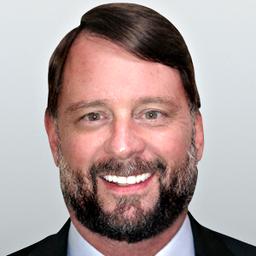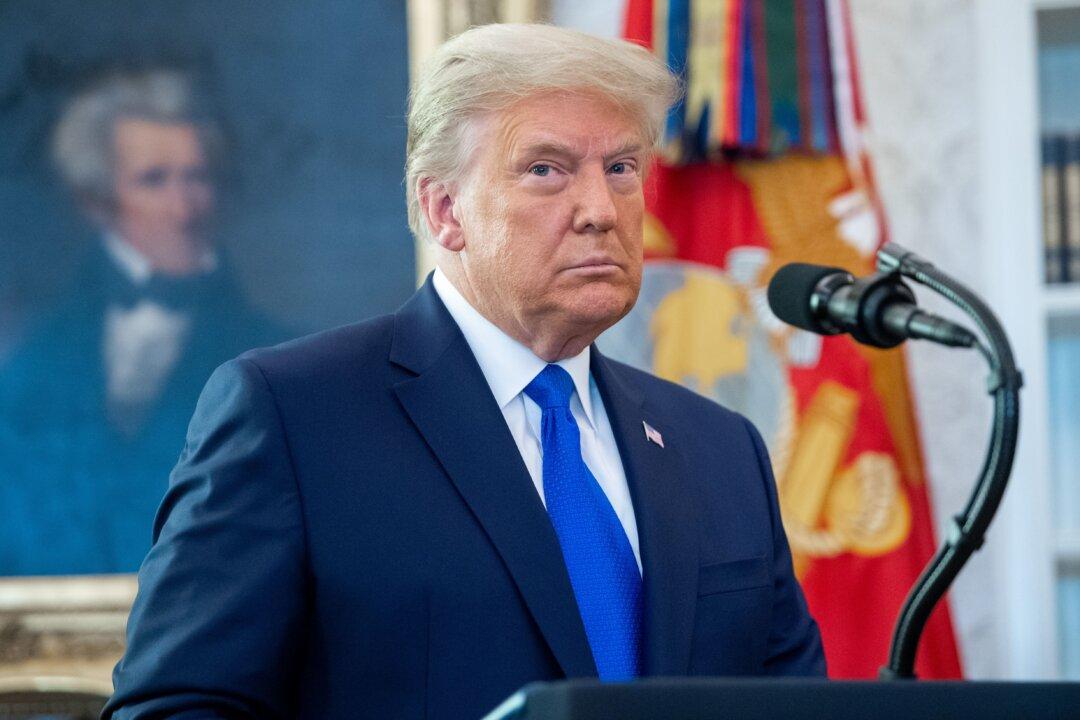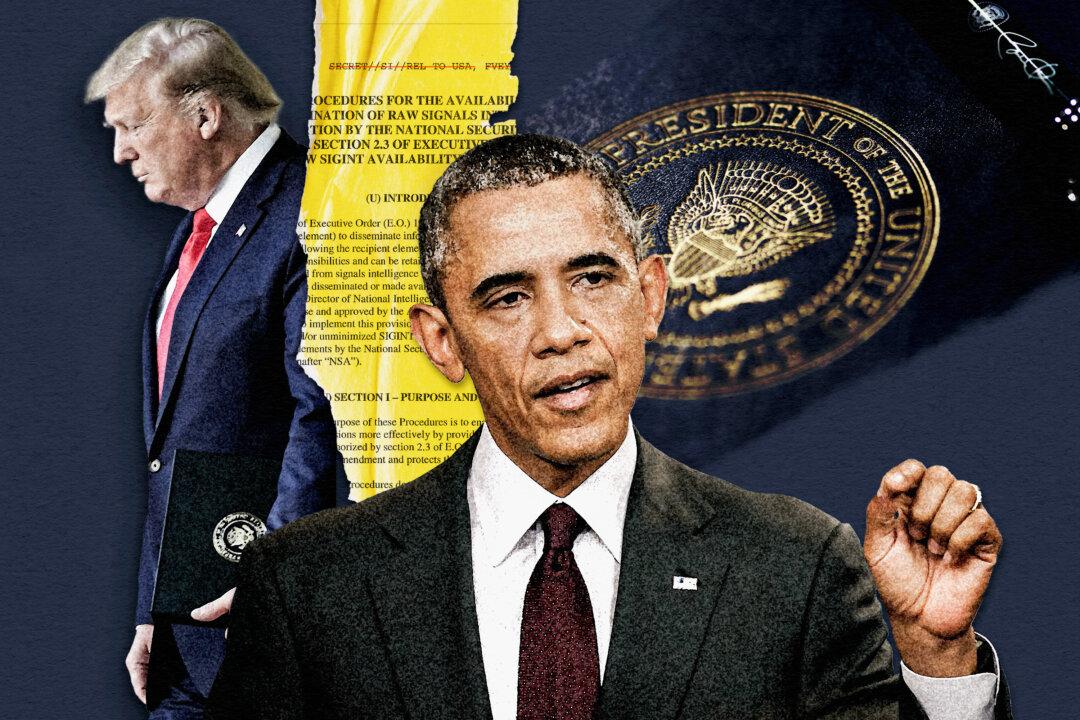Julian Assange, through a series of tweets sent by WikiLeaks, said the meetings did not occur.
No other news source has corroborated The Guardian’s story and the publication has added some qualifying language to the article after it was published, but continues to stand by its reporting. The article also notes that Manafort’s lawyers “initially declined to answer the Guardian’s questions about the visits.”
According to The Guardian, Manafort first visited Assange in 2013, about a year after Assange sought asylum inside the Ecuadorian Embassy in London. A second visit allegedly took place in 2015 before a final meeting in March of 2016. Notably, there was no visit during 2014 cited.
According to The Guardian, Manafort’s first visit was also attended by others:
“A separate internal document written by Ecuador’s Senain intelligence agency and seen by the Guardian lists “Paul Manaford [sic]” as one of several well-known guests. It also mentions “Russians.”
It’s not clear if Manafort’s second visit was limited to just himself, but The Guardian reports his 2016 visit involved only Manafort and Assange:
“He paid another visit in spring 2016, turning up alone, around the time Trump named him as his convention manager. The visit is tentatively dated to March.
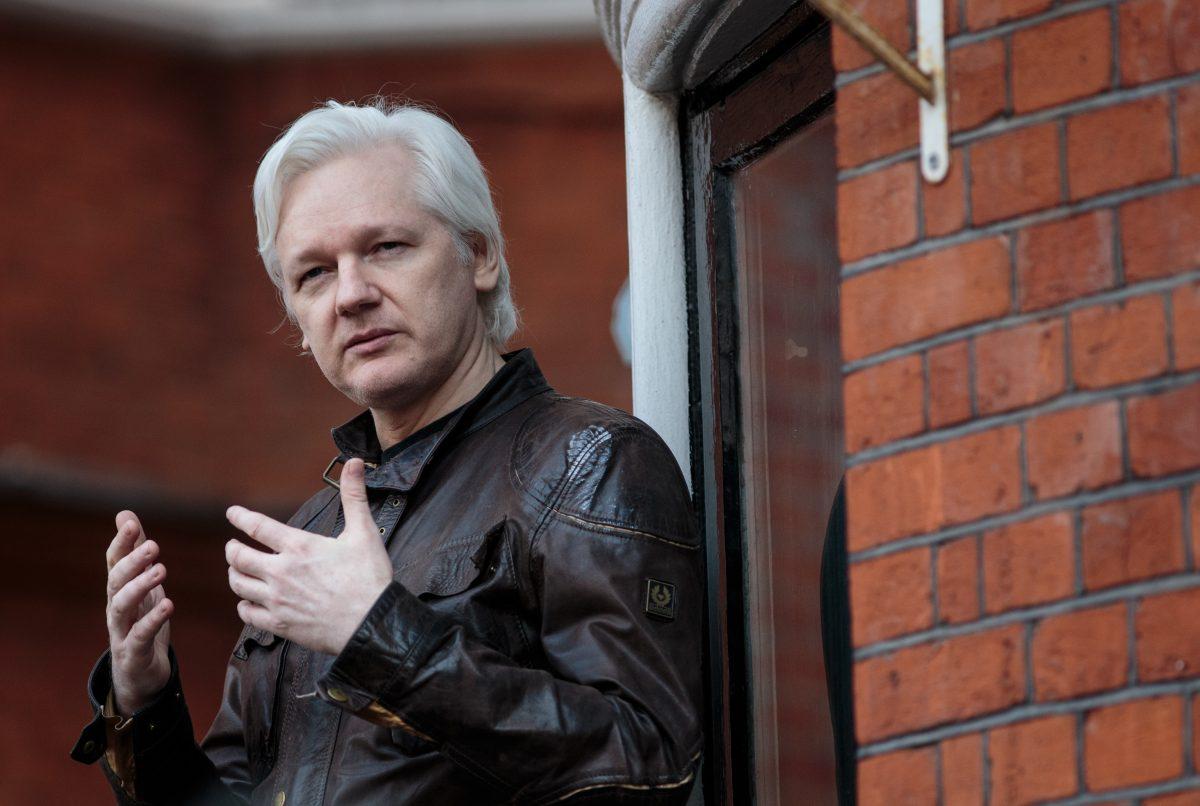
Manafort’s 2016 visit to Assange lasted about 40 minutes, one source said, adding that the American was casually dressed when he exited the embassy, wearing sandy-coloured chinos, a cardigan and a light-coloured shirt.
Surrounding Events
Although the Guardian story may ultimately be disproven, there is another intriguing series of contacts that took place between the lawyer of Russian Oligarch Oleg Deripaska, Adam Waldman, and Julian Assange and high ranking US officials.Manafort and his business partner, Rick Gates, were closely associated with Deripaska from 2005 to 2009 and maintained contact until at least 2011. For the next several years, their ties became more ambiguous. What is known is that in 2014 Deripaska filed a lawsuit against Manafort in the Cayman Islands claiming that Manafort and Gates had “simply disappeared.” Deripaska filed a second lawsuit in a Virginia court in 2015.
The lawsuits relate to an investment fund, Pericles Emerging Markets. The fund was started by Manafort and several partners in 2007. Deripaska was the financial backer of the fund and agreed to commit as much as $100 million, although he apparently only invested $18.9 million in 2008 to finance the purchase of Black Sea Cable. Deripaska has also claimed that he paid “about $7.3 million in management fees to the fund over two years.”
At the time that Deripaska filed his first lawsuit, Manafort found himself in financial trouble as his payments from Ukraine dried up in 2014. Manafort was interviewed by the FBI in July 2014, and began taking out loans on his real estate properties. In the meantime, Manafort remained indebted to Deripaska.
In addition to Deripaska, there was another high-profile individual seeking access to the United States, and he had the help of Deripaska’s lawyer, Adam Waldman. In 2017, Waldman was also representing Julian Assange. Waldman also, at the same time, represented interests of Christopher Steele. Steele, a former MI6 agent, is one of the authors of the Steele dossier on then candidate Donald Trump, which was paid for by the DNC and the Clinton campaign.
Ohr would later act as a conduit between Steele and the FBI in 2016 and 2017 in the context of the agency’s counterintelligence investigation into the Trump campaign.
During a series of communications in early 2016, Steele appeared to be lobbying Ohr on Deripaska’s behalf—and Waldman’s name was also mentioned:
Steele: I heard from Adam Waldman yesterday that OD is applying for another official US visa ice [sic] APEC business at the end of February.” Deripaska is being “encouraged by the Agency guys who told Adam that the USG [United States Government] stance on [Deripaska] is softening. … A positive development it seems.On Feb. 8, 2016, Deripaska was mentioned again. He had been granted a visa to visit the United States. This time, Steele appeared to be asking Ohr to provide inside information regarding Deripaska’s visa status:
Steele: Our old friend OD apparently has been granted another official visa to come to the US later this month. … As far as I’m concerned, this is good news all round although as before, it would be helpful if you could monitor it and let me know if any complications arise.”
“It was Mr. Manafort who initiated the process for getting a job on the campaign, the documents show. It began when he sent two succinct memos to Mr. Trump through Thomas J. Barrack Jr., a mutual friend,” The New York Times reported on April 8, 2017.
As noted by Manafort, his previous contact with Trump had been minimal:
“Donald Trump and I had some business in the 1980s but we had no relationship until the Trump campaign called me,” The New York Times reported.
On July 29, 2016, Kilimnik told Manafort he had spent five hours with “the guy who gave you your biggest black caviar jar several years ago.” This is almost certainly a reference to Deripaska. Kilimnik said “the guy” wanted to pass a message on to Manafort. “It has to do about the future of his country, and is quite interesting,” he said.
Julian Assange
In January 2017, a strange sequence of events concerning Assange began to unfold when the Assange legal team first approached Waldman regarding possible negotiations for “limited immunity and safe passage out of a London embassy to talk with U.S. officials.” The Hill reported the following:“They hoped Waldman, a former Clinton Justice Department official, might navigate the U.S. law enforcement bureaucracy and find the right people to engage.”
“Assange had a bargaining chip: The U.S. government knew he had a massive trove of documents from classified CIA computers, identifying sensitive assets and chronicling the agency’s offensive cyber warfare weapons.”
Almost immediately after accepting the Assange engagement, Waldman contacted Bruce Ohr:
“Waldman contacted Ohr, a Justice official he’d met during the Russia election case. They talked by phone and encrypted text messages in early January, then met Feb. 3, 2017, in Washington, records show.”
“Waldman allegedly visited Assange twice on 12 and 13 January 2017, days before Trump’s inauguration as president, and again immediately after the ceremony, on 27 January.”
Steele: Hi B! Our guy’s OK for the time being but I would like to keep our channel open on him and his situation if that’s all right? Many thanks for your support and Best wishes.
Steele: B, doubtless a sad and crazy day for you-SY [Sally Yates]. Just wanted to check you are OK, still in situ and able to help locally as discussed, along with your Bureau colleagues, with our guy if the need arises? Many Thanks and Best as Always, C
“Waldman negotiated with the Justice Department on a possible deal to get the WikiLeaks founder limited immunity and safe passage out of a London embassy to talk with U.S. officials.”
“In return, Assange would provide technical information to the U.S. ruling out certain suspects in the release of hacked DNC emails key to the Russia case, identify vulnerabilities in the CIA’s computer systems and talk about measures to protect certain sensitive information in future releases by Wikileaks.”
“I am following up on a conversation you had with Bruce Ohr at the Department of Justice. Please give me a call as soon as possible; would like to set up a conference call this evening with some colleagues to hear what your client is seeking and has to offer.”
On Feb. 15, 2017, Waldman sent Warner this text regarding the negotiations with Assange:
“Mark, I wanted to let you know that everyone I have spoken with in USG [US Government] about this matter, each of whom I have also been entirely transparent with about my motives in trying to assist, has assured me that they understand and appreciate my efforts. Perhaps that’s wrong but I wanted to pass along to you. I told Assange just as I told the USG that I would end this pro bono role if I found that the objective (safe passage to discuss w USG the past and future leaks) could not be achieved.”
The following day, Waldman followed up with Warner in this rather ominous-sounding text in an apparent reference to Assange:
“Just want to underscore my opinion and the reason I got involved – this guy is going to do something catastrophic for the dems, Obama, CIA and national security. I hope someone will consider getting him to the US to ameliorate the damage.”
“He [Warner] told me he had just talked with Comey and that, while the government was appreciative of my efforts, my instructions were to stand down, to end the discussions with Assange,” Solomon said Waldman told him.
Solomon reported that Waldman couldn’t believe that Warner and Comey were sending a different signal and that Laufman assured him negotiations were still on.
Timing of Events
At the start of March 2017, a number of events, some potentially inter-related, took place.“Terrible! Just found out that Obama had my “wires tapped” in Trump Tower just before the victory. Nothing found. This is McCarthyism!”
“In March, Mr. Deripaska took out newspaper ads stating that he was willing to participate in hearings before Congress after The Associated Press published a report alleging that Mr. Manafort had provided him with a plan in 2005 outlining steps to “greatly benefit the Putin government,” by influencing politics and news coverage in the United States. Mr. Deripaska has denied ever entering into such an arrangement and sued The A.P. for libel last month,” The New York Times reported on May 26, 2017.
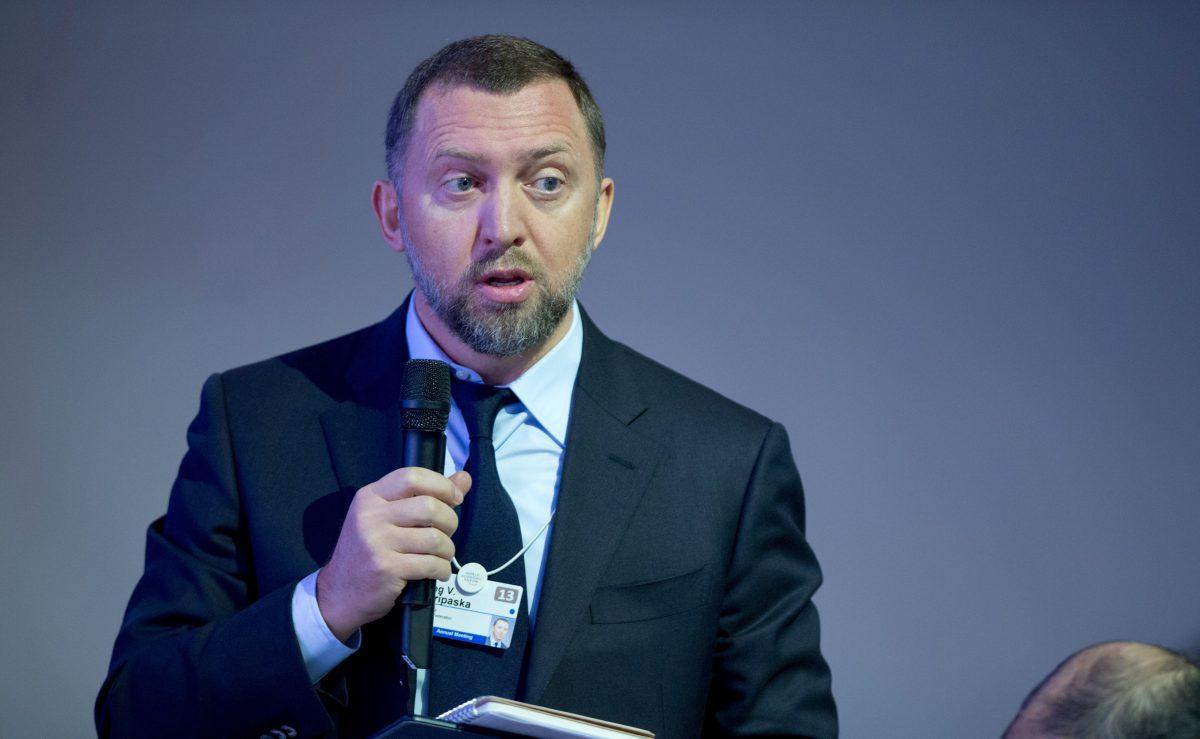
Deripaska would make the same offer again in May 2017.
On March 7, 2017, in what appears to be a negotiating tactic by Assange, WikiLeaks released thousands of files relating to the CIA’s arsenal of hacking tools. These included cyber-tools that could be used to convert cellphones and other devices into surveillance tools. Some of these tools were also able to bypass encryption-enabled applications like WhatsApp and Telegram.
The release by WikiLeaks, known as Vault 7, did not appear to deter negotiations as a reported mid-March email from Waldman to Laufman seems to indicate:
“Dear David, I relayed our conversations to Assange and he had a generally positive view of it.”
In the midst of the ongoing Assange negotiations, Waldman met on March 16 with former staffer of Sen. Dianne Feinstein (D-Calif.), Dan Jones, who had recently begun working with Fusion GPS and Steele. The meeting was highlighted in a Daily Caller op-ed written by Deripaska.
“On March 16, 2017, Daniel Jones—himself a team member of Fusion GPS, self-described former FBI agent and, as we now know from the media, an ex-Feinstein staffer—met with my lawyer, Adam Waldman, and described Fusion as a “shadow media organization helping the government,” funded by a “group of Silicon Valley billionaires and George Soros,” Deripaska wrote.
“I don’t know what the DNI’s knowledge of it was because we didn’t have a DNI until Mr. Coats took office and I briefed him his first morning in office,” Comey said.
On March 17, 2017, Waldman again texted Warner: “Chris Steele asked me to call you.”
Steele: “Hi! Just wondering if you had any news? Obviously, we’re a bit apprehensive given scheduled appearance at Congress on Monday. Hoping that important firewalls will hold. Many thanks.”
Deripaska had either just arrived in London or was about to arrive.
“Subject to adequate and binding protections, including but not limited to an acceptable immunity and safe passage agreement, Mr. Assange welcomes the opportunity to discuss with the U.S. government risk mitigation approaches relating to CIA documents in WikiLeaks’ possession or control, such as the redaction of agency personnel in hostile jurisdictions and foreign espionage risks to WikiLeaks staff,” Waldman wrote Laufman on March 28, 2017.
Waldman: Chris is concerned about the leaks yesterday. He has been trying to reach me and we are going to talk in the next eight hours. Then will revert.
Warner: Keep me informed also any news from ur other guy on manafort
“As we give continued consideration ot the substance of your proposed proffer, please clarify a procedural point: namely, in your March 28, 2017, email, you indicate that Mr. Assange is seeking a ”safe passage agreement.“ What kind of ”safe passage“ is he asking for -- the ability to return to the embassy after a meeting elsewhere in London, if such a meeting can be arranged, or something else?”
On April 10 2017 Waldman texted Warner regarding all three of his clients—Steele, Assange and Deripaska:
Hi. Steele: would like to get a bi partisan letter from the committee; Assange: I convinced him to make serious and important concessions and am discussing those w DOJ; Deripaska: willing to testify to congress but interested in state of play w Manafort. I will be with him next tuesday for a week.
Negotiations on Assange appear to fall apart at this point as there are no further references to Assange in the remaining public texts.
“WikiLeaks walks like a hostile intelligence service and talks like a hostile intelligence service. It has encouraged its followers to find jobs at CIA in order to obtain intelligence. It directed Chelsea Manning in her theft of specific secret information. And it overwhelmingly focuses on the United States, while seeking support from anti-democratic countries and organizations.”
“It is time to call out WikiLeaks for what it really is—a non-state hostile intelligence service often abetted by state actors like Russia.”
“Julian Assange told a U.S. congressman on Tuesday he can prove the leaked Democratic Party documents he published during last year’s election did not come from Russia and promised additional helpful information about the leaks in the near future.”
“Our three-hour meeting covered a wide array of issues, including the WikiLeaks exposure of the DNC [Democratic National Committee] emails during last year’s presidential election,” Rohrabacher said, “Julian emphatically stated that the Russians were not involved in the hacking or disclosure of those emails.”
“Julian also indicated that he is open to further discussions regarding specific information about the DNC email incident that is currently unknown to the public,” he said.”

